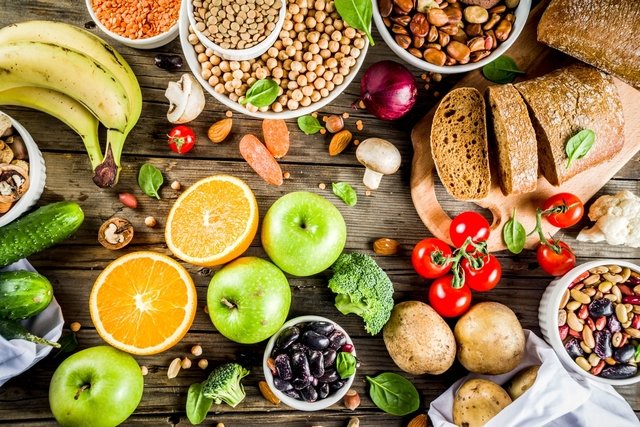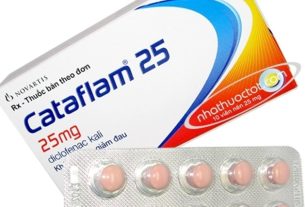To follow a diet rich in fiber, it is important to follow some tips such as: eating at least 3 servings of fruit a day; prioritize whole grains; and eat at least 2 servings of vegetables per day.
The fiber present in foods such as brown rice, vegetables and fruits stimulate bowel movements and prolong satiety. Therefore, a diet rich in fiber can be recommended to combat constipation and promote weight loss. Discover all the health benefits of fiber.
The recommended daily amount of fiber varies according to age, sex and stage of life. Children aged 9 to 13 need to consume 31 g per day. The recommended intake for adults aged 19 to 50 is 25 to 38 g of fiber per day.

How to follow a high fiber diet
Some tips for following a fiber-rich diet are:
1. Consume at least 3 servings of fruit
Consume at least 3 servings daily, of approximately 80 g each, of fruits such as persimmon, jambo, guava, coconut, avocado, pear, papaya and orange.
The fruits are rich in fiber and can be consumed (with skin and pomace, whenever possible) natural, added to smoothies or salads. See other fruits rich in fiber.
2. Prioritize whole grains
Prioritizing whole grains, such as oats, brown rice, quinoa, whole wheat flour and whole pasta, helps increase fiber intake in the diet. Whole grains can be used in recipes such as cakes, breads, pancakes and pies.
3. Eat at least 2 servings of vegetables per day
Eat at least 2 servings of non-starchy vegetables a day such as lettuce, carrots, chicory, chayote, pumpkin, spinach, kale, beetroot and zucchini. These foods are rich in fiber and can be consumed at lunch and dinner in preparations such as salads, juices, stir-fries, roasts or stews.
Furthermore, you can also use the peels and stems when preparing these foods, as these parts contain a higher fiber content.
4. Consume legumes
Legumes, such as beans, lentils, chickpeas and soybeans, are rich in fiber. Therefore, consuming at least 3 tablespoons of legumes per day helps increase fiber intake in the diet.
5. Drink plenty of fluids
During the diet, it is essential to drink 1.5 to 2 liters of fluids per day, such as water, tea or coconut water. This is because fibers need water to act in the stomach and intestine, promoting health and preventing constipation. See the recommended amount of water for each person.
6. Include nuts and seeds in your diet
Oilseeds, such as walnuts, Brazil nuts, peanuts, hazelnuts and almonds, should be included in the diet because they are rich in fiber. Therefore, consuming around 30 g of oilseeds per day, which corresponds to 1 handful of peanuts, for example, increases fiber intake in the diet.
Furthermore, seeds such as chia, pumpkin seeds, flaxseed and sesame are also rich in fiber, making them great options for adding to yogurt, fruit or smoothies.
When is it indicated
A high-fiber diet can be recommended for the following purposes:
- Prevent or combat constipation;
- Help with weight loss;
- Reduce the risk of cancer;
- Prevent or control diabetes;
- Reduce cholesterol and triglyceride levels in the blood.
Furthermore, this diet can also be recommended to help treat dysbiosis, an imbalance in the intestinal flora that can cause inflammation and nutrient deficiencies, for example.
3-day high-fiber diet menu
The following table shows an example of a 3-day menu for the high-fiber diet:
This menu is just a model that may vary depending on health status, weight and physical activity. Therefore, it is advisable to consult a nutritionist for a complete assessment and planning an individualized menu.
Bibliography
- HARVARD SCHOOL OF PUBLIC HEALTH. The nutrition source: fiber. Available at: <https://www.hsph.harvard.edu/nutritionsource/carbohydrates/fiber/>. Accessed on Nov 24, 2022
- WORLD ORGANIZATION DIET. Fact sheet: healthy diet. Disponível em: <https://www.who.int/news-room/fact-sheets/detail/healthy-diet#:~:text=Intake%20of%20saturated%20fats%20should,4%2C%205%2C%206>. Acesso em 24 nov 2022
- NATIONAL INSTITUTE OF HEALTH – OFFICE OF DIETARY SYPLEMENTS. Nutrient Recommendations: Dietary Reference Intakes (DRI). 2011. Available at: <https://ods.od.nih.gov/HealthInformation/Dietary_Reference_Intakes.aspx>. Accessed on Nov 24, 2022

Sign up for our newsletter and stay up to date with exclusive news
that can transform your routine!
Warning: Undefined array key "title" in /home/storelat/public_html/wp-content/plugins/link-whisper-premium/templates/frontend/related-posts.php on line 12
Warning: Undefined array key "title_tag" in /home/storelat/public_html/wp-content/plugins/link-whisper-premium/templates/frontend/related-posts.php on line 13



